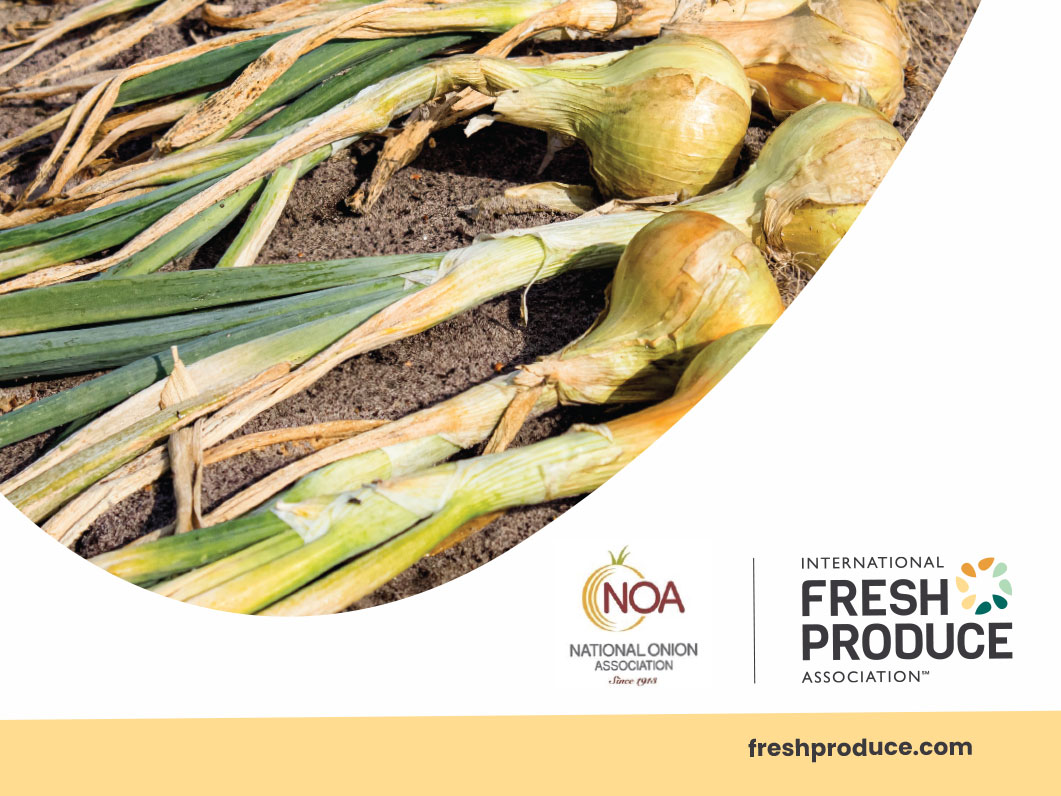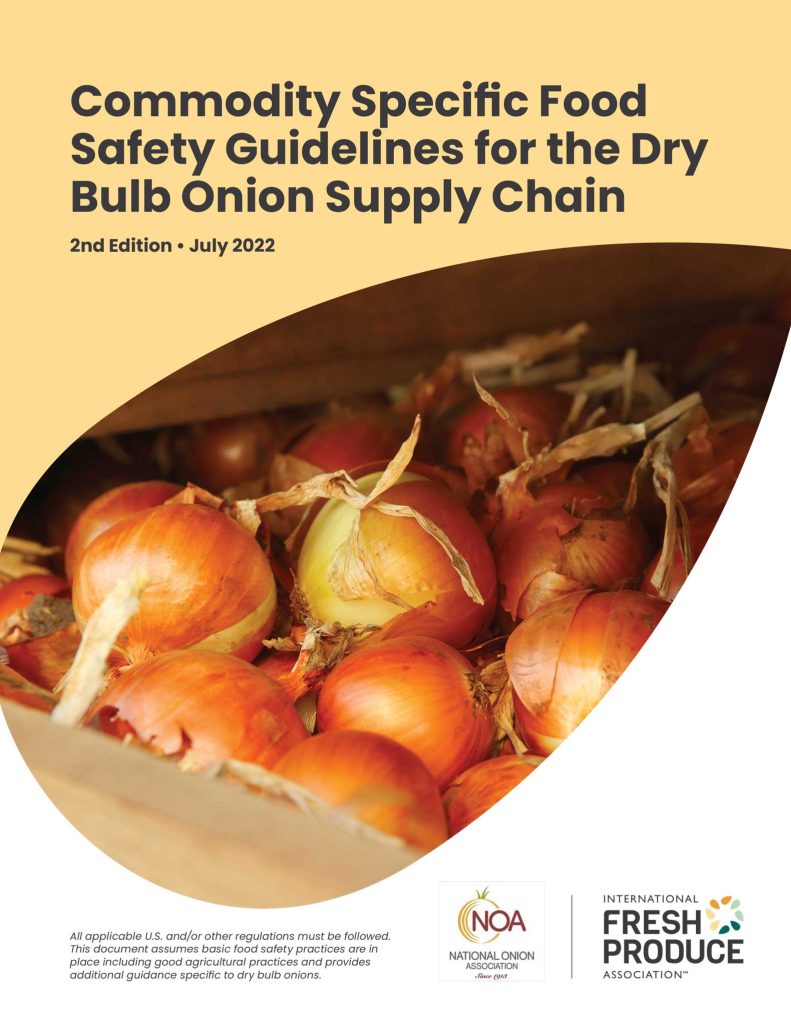An Oct. 18 webinar, set for 2 p.m. ET, will share highlights of a year-long collaboration on the second edition of “Commodity Specific Food Safety Guidelines for the Dry Bulb Onion Supply Chain.”
The collaboration includes the National Onion Association and the International Fresh Produce Association, along with Extension professionals engaged in food safety research for onion production and handling. The webinar will present a sampling of the new best practices document and next steps in food safety education, outreach, and research needs for the dry bulb onion industry.
The webinar is free to attend and open to the public, and to register or to access the “Commodity Specific Food Safety Guidelines for the Dry Bulb Onion Supply Chain,” visit the IFPA site at https://www.freshproduce.com/resources/food-safety/guidelines-for-the-dry-bulb-onion-supply-chain/ as well as https://www.freshproduce.com/resources/food-safety/commodity-specific-resources/ and the NOA site at https://www.onions-usa.org/wp-content/uploads/2022/08/22-OnionBestPractices-v6-print-final.pdf.
According to a release from IFPA, “The U.S. dry bulb onion industry established its original food safety framework and guidance document in 2010. The updated document takes into account new scientific findings and the evolution in onion production and handling practices across the U.S. According to NOA, the document represents the industry’s best science, practices, and intentions to instill confidence in consumers that U.S. onions are safe and sustainable.”
The collaborative working group convened in July 2021 and “met routinely over the course of eight months to provide clarity and context within the greater goals of public health for fresh produce.” IFPA noted that “incorporating onion-specific details and updating scientific literature will help support not only U.S. onion growers and packers in building and maintaining their food safety programs but will also educate other individuals working within the onion supply chain including regulators, auditors, and produce buyers who may not be as familiar with onion production and handling practices.”
The release also said, “Additionally, although the document was developed by the U.S. dry bulb onion industry, its fundamentals are broadly applicable, and the document can be adapted for production in other growing regions.”



